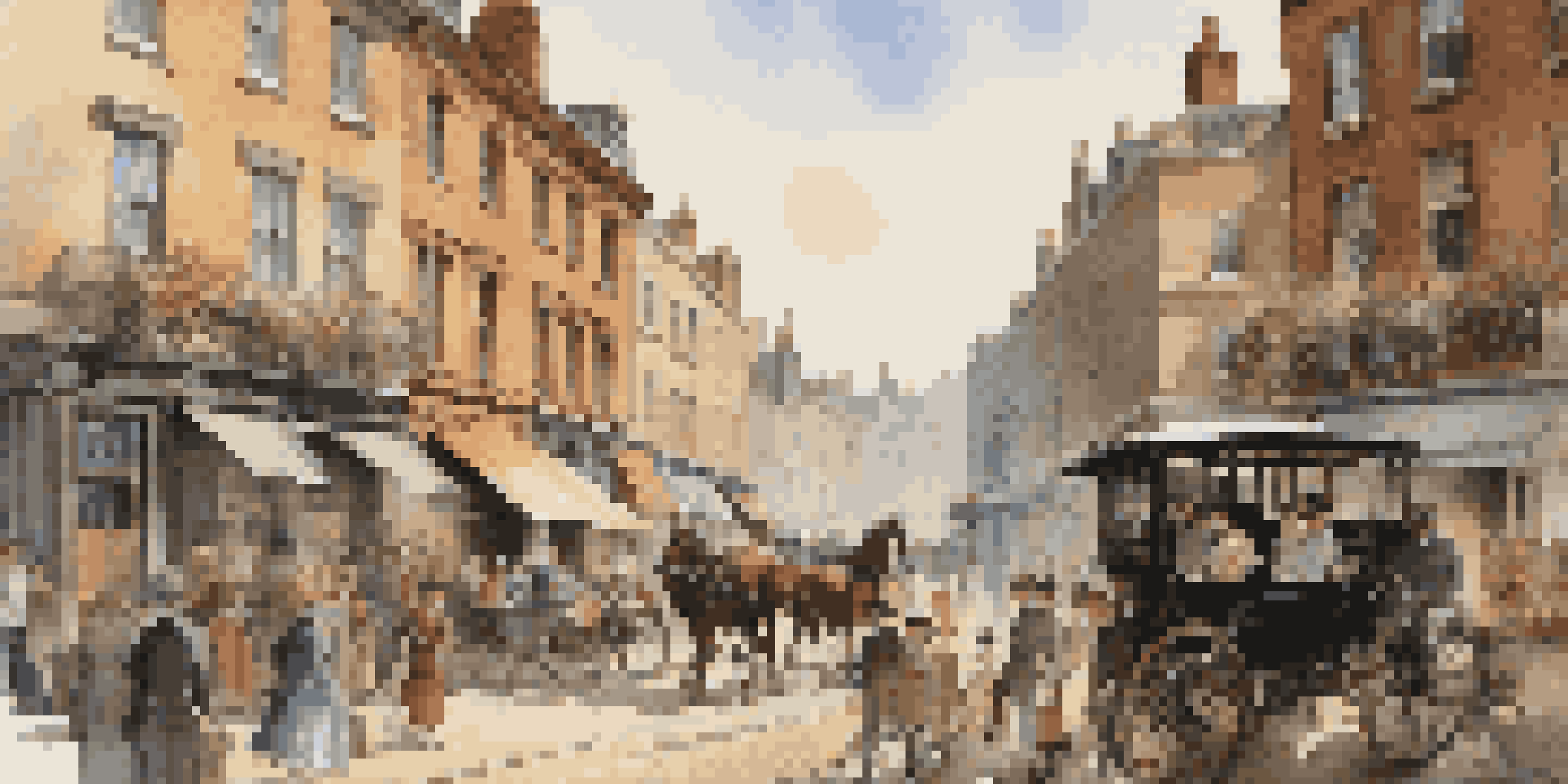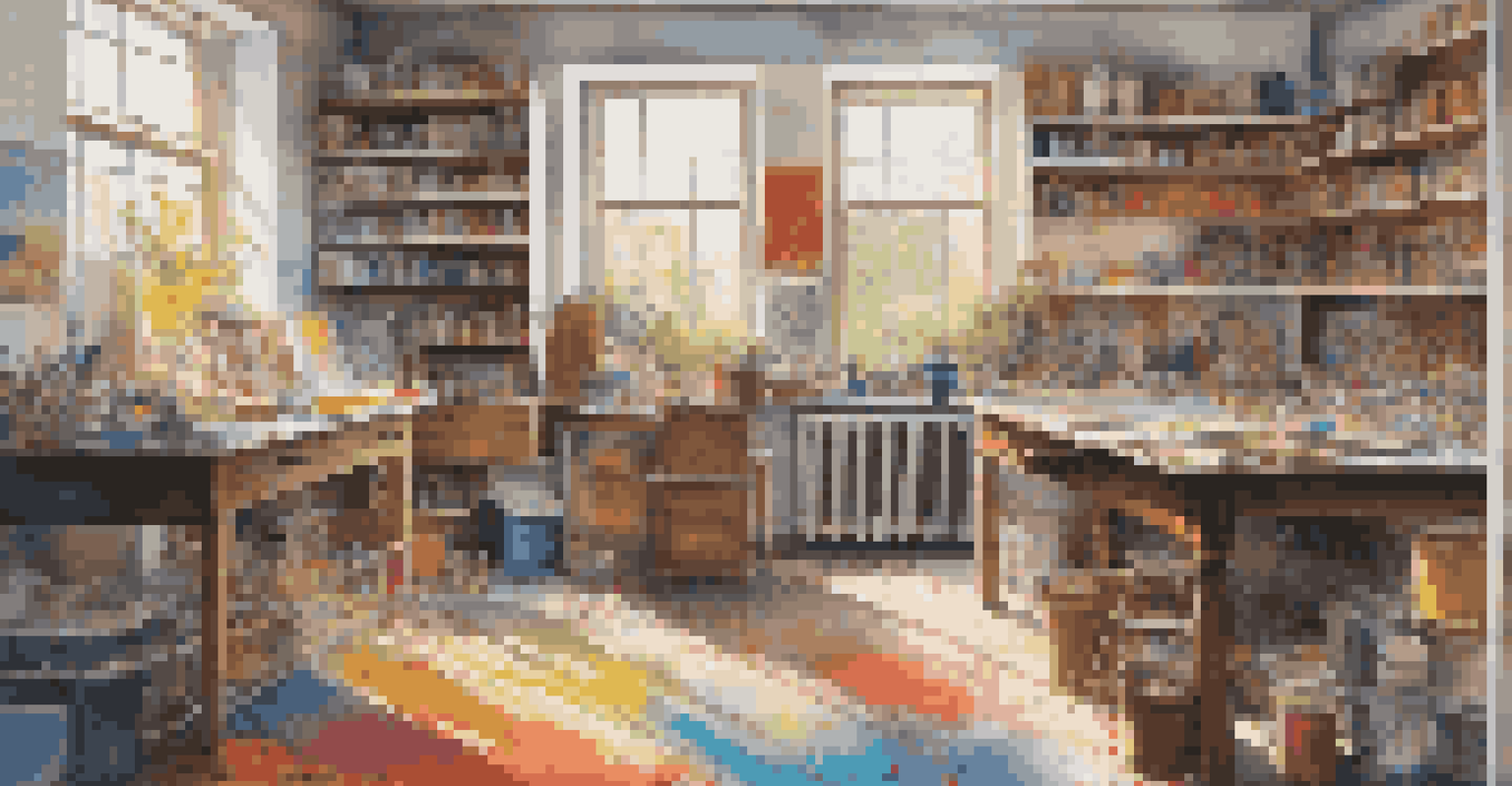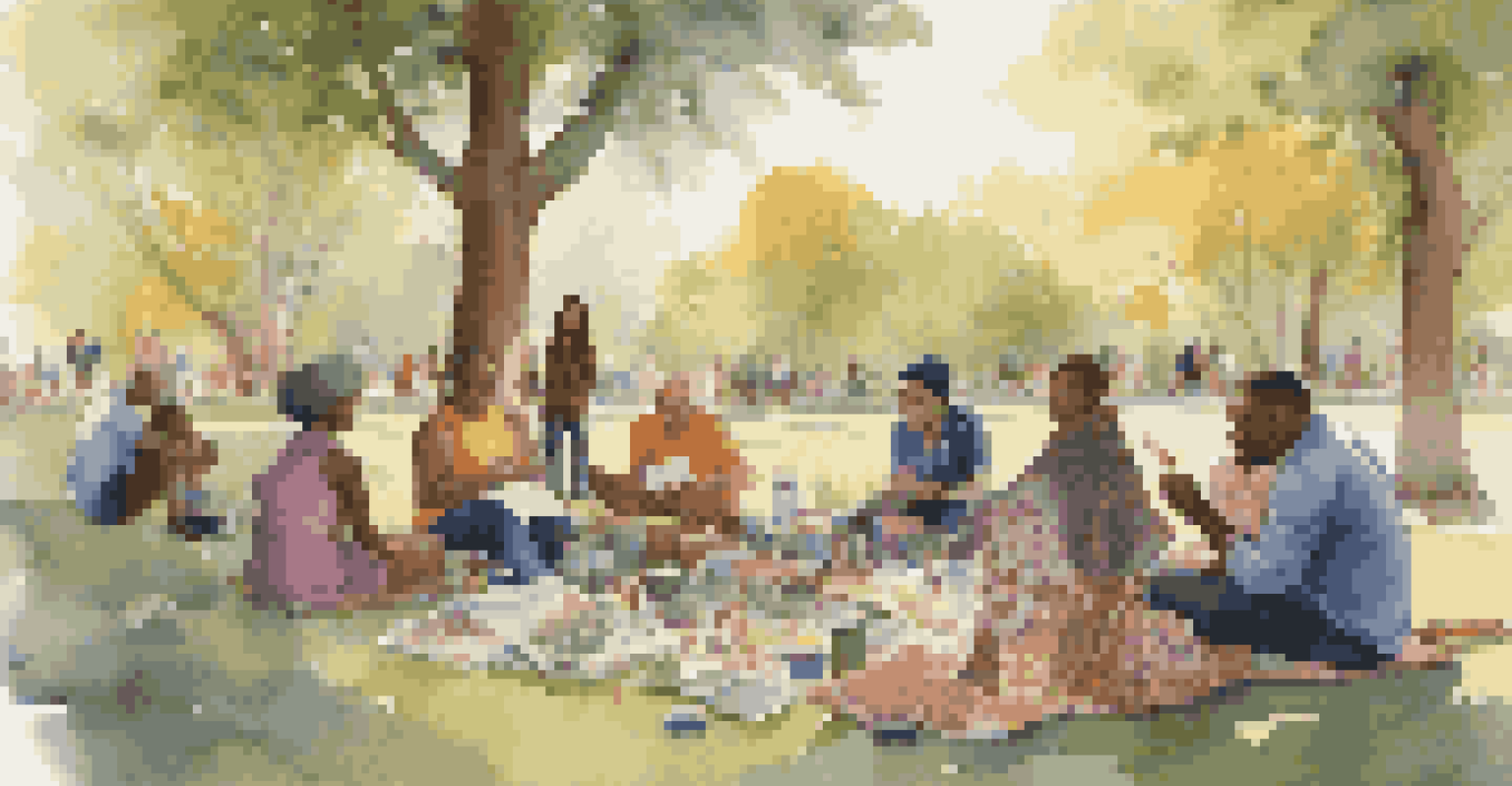Literature and Art as Reflections of Societal Values

Understanding Societal Values Through Art and Literature
Art and literature serve as powerful lenses through which we can observe societal values. They capture the essence of a time and place, reflecting the beliefs, norms, and struggles of a community. For example, the works of Charles Dickens offer a vivid portrayal of Victorian England, highlighting issues like poverty and social injustice.
Art is the most beautiful of all lies.
These creative expressions not only mirror society but also influence it by provoking thought and inspiring action. When readers engage with a novel or viewers connect with a painting, they often find themselves questioning their own values and the world around them. This dynamic relationship between art, literature, and society creates a feedback loop that can lead to social change.
Moreover, as cultures evolve, so do their artistic expressions. The shift from classic literature to modern works showcases how changing societal values are captured through different styles and themes. This ongoing dialogue between art and society enriches our understanding of human experiences across time.
Historical Context: Art and Literature as Social Commentary
Throughout history, artists and writers have used their mediums to comment on the socio-political issues of their times. For instance, during the Harlem Renaissance, African American writers and artists like Langston Hughes and Zora Neale Hurston celebrated Black culture while addressing racial discrimination. Their works became a powerful voice for social change.

Similarly, the feminist literature movement of the 20th century challenged traditional gender roles and advocated for women's rights. Authors like Virginia Woolf and Simone de Beauvoir explored themes of identity, autonomy, and liberation, reflecting the evolving societal views on gender equality. Their narratives not only mirrored the struggles women faced but also contributed to the broader discourse on women's rights.
Art Reflects and Influences Society
Art and literature serve as mirrors to societal values, capturing cultural beliefs and inspiring change through engagement.
These historical examples show how literature and art can serve as catalysts for societal reflection and reform. By documenting the challenges and triumphs of their times, artists and writers help preserve collective memories and inspire future generations to continue the conversation.
The Role of Cultural Identity in Artistic Expression
Cultural identity plays a significant role in shaping artistic expression and literature. Artists and writers often draw from their personal experiences and backgrounds to create works that resonate with their communities. For instance, Indigenous art often incorporates traditional stories and practices that reflect the values and beliefs of Indigenous cultures.
The role of the artist is to ask questions, not to answer them.
This connection to cultural heritage allows for a rich exploration of identity, belonging, and social values. For example, the graphic novels of Marjane Satrapi, particularly 'Persepolis,' depict her experiences growing up during the Iranian Revolution, offering insights into the complexities of cultural identity and societal expectations. Readers are not just entertained but also educated about the cultural context behind her work.
As societies become increasingly multicultural, the fusion of diverse perspectives in art and literature enhances our understanding of shared human experiences. This blending of cultural identities encourages empathy and appreciation for different values, fostering a more inclusive society.
The Impact of Technology on Art and Literature
In today's digital age, technology is reshaping the landscape of art and literature in unprecedented ways. Social media platforms allow artists and writers to share their work with a global audience, breaking down barriers that once limited access to creative expression. This democratization of art enables diverse voices to be heard and celebrated.
Moreover, digital tools have transformed the way stories are told and experienced. Interactive narratives and virtual reality art installations challenge traditional forms, inviting audiences to engage with content in new ways. For instance, video games often incorporate rich storytelling elements that reflect contemporary societal values and dilemmas, making players active participants in the narrative.
Cultural Identity Shapes Expression
Artists and writers draw heavily from their cultural backgrounds, enriching their work with themes of identity and belonging.
As technology continues to evolve, so too will the methods through which artists and writers express their reflections on society. This shift not only enhances creativity but also raises important questions about authenticity, representation, and the future of artistic expression.
Art Movements as Reflections of Societal Change
Art movements often emerge as responses to societal changes, encapsulating the zeitgeist of their times. For example, the Impressionist movement in the late 19th century challenged traditional artistic conventions, reflecting a society in transition due to industrialization and urbanization. Artists like Monet and Renoir captured fleeting moments of everyday life, emphasizing the beauty in the mundane.
Similarly, the Surrealist movement explored the unconscious mind, reflecting the societal upheaval following World War I. Artists such as Salvador Dalí used dream-like imagery to critique reality and question societal norms. Their works served as both escapism and a commentary on the absurdity of human existence.
Understanding these movements helps us appreciate how art not only reflects societal values but also acts as a barometer for cultural shifts. The evolution of artistic styles illustrates the ongoing dialogue between artists and the world around them, revealing how deeply intertwined art and society truly are.
Literature and Art in Shaping Social Movements
Literature and art have long played a pivotal role in shaping social movements and rallying communities around common causes. From Harriet Beecher Stowe's 'Uncle Tom's Cabin,' which galvanized anti-slavery sentiments, to the powerful imagery of protest art during the Civil Rights Movement, creative expression has been a force for social change. These works ignite passion and inspire action.
Moreover, contemporary movements like Black Lives Matter and climate activism leverage art and literature to amplify their messages. Poets, musicians, and visual artists use their platforms to raise awareness and challenge the status quo. For instance, the song 'This is America' by Childish Gambino addresses systemic racism in the United States, sparking critical discussions around race and identity.
Technology Transforms Creative Landscapes
Digital advancements are reshaping how art and literature are created and shared, allowing for broader access and innovative storytelling.
By harnessing the power of storytelling and visual representation, artists and writers can evoke emotions and inspire collective action. Their contributions to social movements remind us that creativity can be a powerful tool for advocacy and transformation.
The Future of Art and Literature in Reflecting Values
As we look to the future, the role of art and literature in reflecting societal values will undoubtedly continue to evolve. Emerging technologies, globalization, and shifting cultural dynamics will shape the way artists and writers engage with their audiences. The challenge lies in remaining authentic while navigating these changes.
One potential outcome is the increased collaboration between artists across different mediums and cultural backgrounds, leading to richer and more diverse expressions of societal values. This cross-pollination can foster a deeper understanding of global issues while preserving local narratives and traditions.

Ultimately, the enduring power of art and literature lies in their ability to connect us to our shared humanity. By continuing to explore and reflect on the complexities of societal values, artists and writers will play a crucial role in shaping the future of our world.